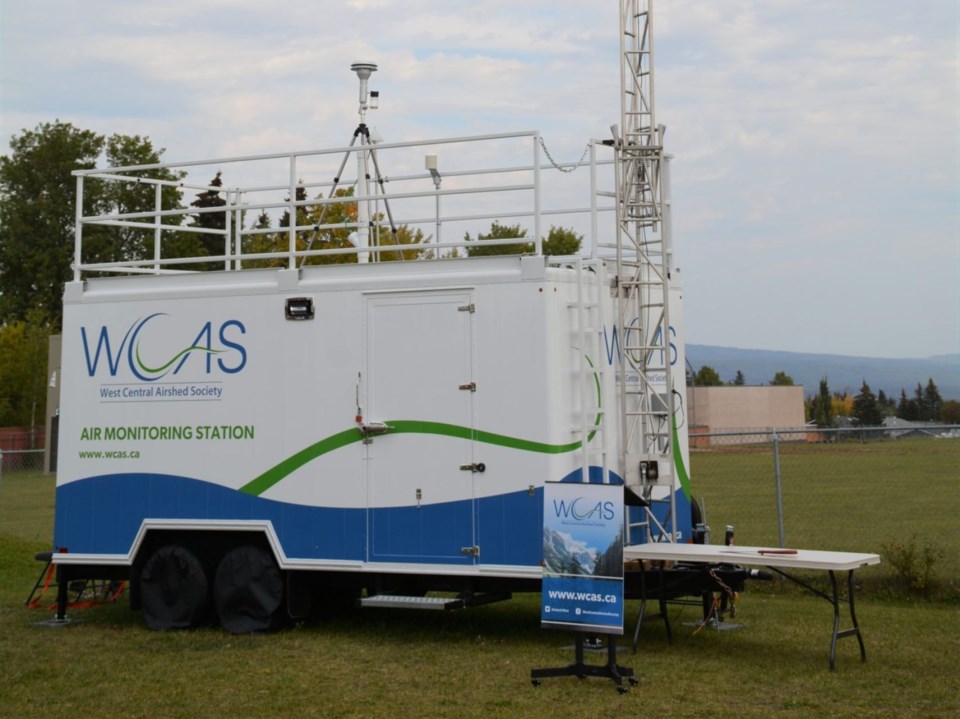Scott Hayes | [email protected]
Local Journalism Initiative Reporter
For six out of the first 14 days of September 2022, Jasper’s air quality went above 80 micrograms of particulate matter sized 2.5 microns or less in width per cubic metre.
Smoke from the wildfires caused that number to peak close to 150 micrograms and then close to 170 micrograms on two of those days.
Because the particles are so small, PM2.5 in the air can get deeper into the lungs and even accumulate in a person’s respiratory system, causing significant health damage, according to Alberta Environment and Protected Areas.
In other words, the air was very bad. It was thanks to Jasper’s two Purple Air sensors that this information was recorded and reported.
That data came out of a presentation made by representatives of the West Central Airshed Society (WCAS) during the municipal council meeting on Feb. 7.
An airshed (with a small ‘a’) is a geographical area where the air is subject to similar conditions of air pollution throughout it. An Airshed (with a capital ‘A’) is what the WCAS is often referred to as.
Gary Redmond, executive director of the non-profit, non-governmental organization, said that those Purple Air sensors are lower cost units and as such don’t quite do the full job. People can sign up to have one stationed on their homes if they want.
A full air quality monitoring station, however, is a $300,000 to $350,000 trailer unit equipped with sensitive and specialized analyzers for each of a number of different pollutants. The trailer also features meteorological monitors and an antenna that can transmit data. Annual maintenance alone can reach $50,000 for monthly instrument calibrations.
“We don’t have a full station in Jasper. Someday we would love to have one but they're rather expensive,” Redmond said.
“Typically, air monitoring stations in Alberta are paid for by large industry emitters obligated to pay their local Airshed. That's how we collect money, and they do it based on their emission level.”
There's no large single emitter in Jasper, he continued, so other ways of financing a full station would have to be researched.
WCAS thinks that the town would be better served with a full station in order to provide a more accurate picture of air quality on a real time basis in Jasper in the future. That PM2.5 also includes airborne water droplets but the hidden challenge is that this moisture can absorb other airborne chemicals down to ground level to where people can breathe it in.
“That is a concern,” Redmond said. “The biggest concern is a spike in wildfires.”
Most of the time – even during last September – Jasper’s air quality is well below 80 micrograms per cubic metre, as noted by a red line on the graph Redmond provided.
“Anything higher than that red line is a concern,” Redmond said. “We do reporting for anything above the red line.”
Only April and November were months where the air quality was consistently close to the 4.5 microgram average. Real time observation and reporting are what air quality monitoring stations are all about.
Hinton now has two air quality monitoring stations. There’s another one at Steeper, 52 kilometres southeast of Hinton, which the WCAS considers to be the province’s primary background station, meaning it collects air quality information coming into the province. There are currently 10 Airshed societies in the province with 89 total stations.




